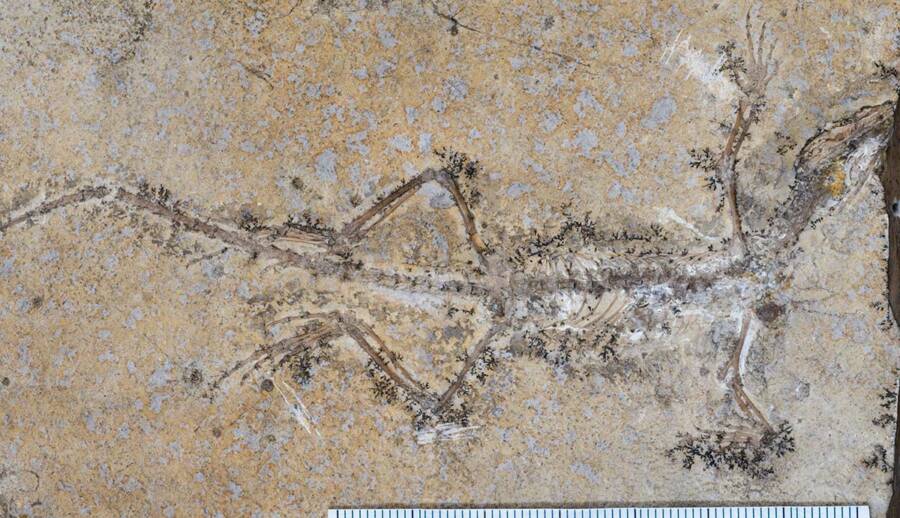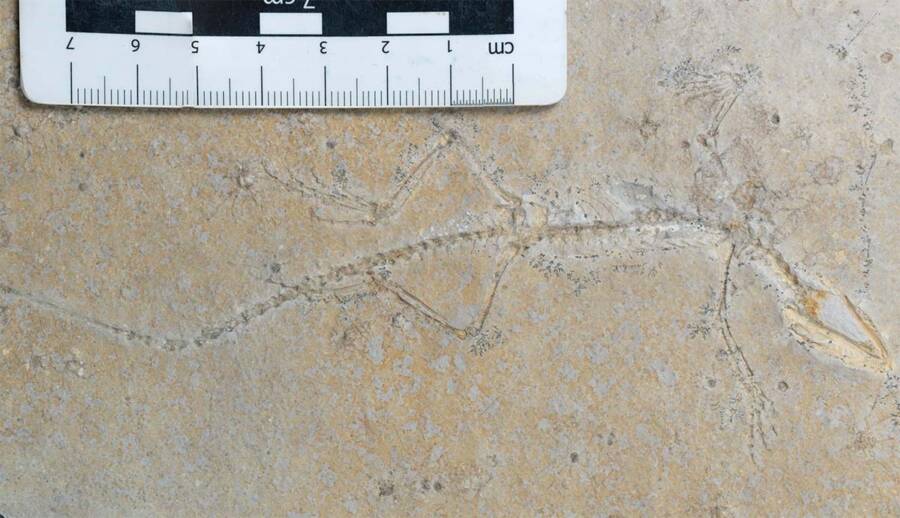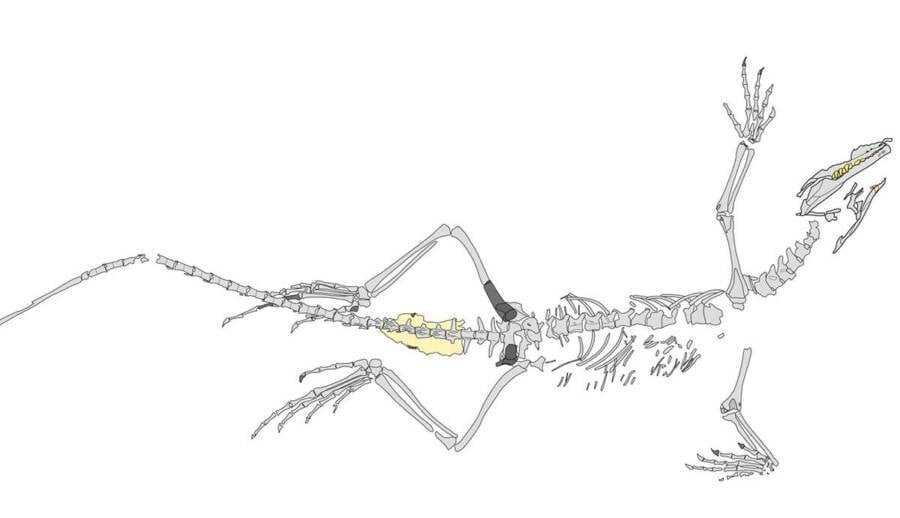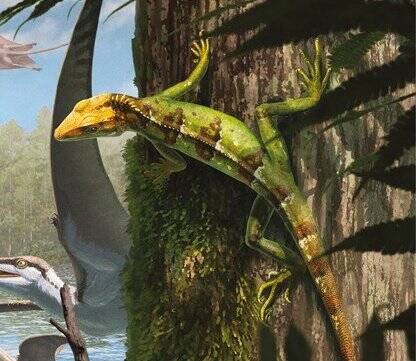PhD student Victor Beccari was studying reptile fossils at London's Natural History Museum when he saw something that looked oddly familiar: a specimen very similar to one he'd seen at the Senckenberg Natural History Museum in Frankfurt, Germany.

Victor BeccariThe Natural History Museum housed one half of the fossil, which featured an imprint of most of the animal’s bones.
A new species of prehistoric reptile has been discovered — thanks to the work of a PhD student who reunited two fossil halves housed in different museums.
After bringing the two halves together, Victor Beccari discovered that this 145-million-year-old reptile that lived alongside the dinosaurs was previously unknown to science.
Now, this discovery opens the door to learning more about the diversity of animal life during the Jurassic Period.
Two Fossil Halves In Britain And Germany Are Reunited To Reveal Sphenodraco scandentis

Victor BeccariThe half of the fossil from the Senckenberg Natural History Museum in Germany contains an outline of the creature’s skeleton.
PhD student Victor Beccari was studying a fossil at London’s Natural History Museum when he realized it looked familiar. It was stunningly similar to a fossil that Beccari had previously seen at the Senckenberg Natural History Museum in Frankfurt, Germany.
Turns out, the pair of fossils were two halves of the same whole. While it’s not uncommon to have two different fossil halves of a single specimen, it’s uncommon for these halves to be in different museums without anyone realizing that they belong together.
“It seems that someone in the 1930s decided to double their profit by selling both halves separately,” Beccari said in a statement from the museum. “As they didn’t tell either buyer that there was another half, the connection between the two fossils had been lost until now.”
The fossil was thought to be of a type of rhynchocephalian, a small reptile that roamed the Earth alongside the dinosaurs and other creatures in the Triassic, Jurassic, and Cretaceous periods.
Today, the only remaining species of rhynchocephalian is the tuatara in New Zealand.
However, further examination revealed that the creature was a species of rhynchocephalian that, before now, scientists had no idea existed.
Beccari and his fellow scientists, who published their findings in the Zoological Journal of the Linnean Society, believe the new species, Sphenodraco scandentis, is the earliest tree-living rhynchocephalian ever discovered.
The Exceptional Fossils Of Germany’s Solnhofen Limestone Area

Victor BeccariThe reptile’s long finger bones suggests it climbed trees.
Beccari and his team scanned and analyzed the fossilized remains of the new species to determine more about its appearance and lifestyle.
Their analysis concluded that S. scandentis had a short body of about six inches with long limbs and long finger bones. Based on its similarities to other reptile species, it’s likely that the animal spent most of its time in trees.

Gabriel UguetoThis six-inch creature lived alongside the dinosaurs during the Jurassic Period roughly 145 million years ago.
A big reason for why scientists were able to ascertain this much information from the fossil is thanks to where it was discovered. It was found in Germany in an area known as Solnhofen Limestone. Many different fossils dating back to the Late Jurassic period have been found here.
“Solnhofen fossils are famous for their exceptional preservation,” Beccari explained. “We know that all the sediment is marine, and so it seems that animals living around these islands ended up being swept out into some oxygen-poor areas when they died.”
This meant that the animals’ bodies were kept safe from predators, so they decomposed with their soft tissue intact, creating a better-preserved fossil.
However, there is a lot more to discover among the Solnhofen fossils. Many of the fossils unearthed in the region have still not been studied in depth.
“I think we’re really underestimating the diversity of these animals,” Beccari added. “In a lot of cases, fossils coming from the same place that look somewhat similar get lumped together.”
Perhaps, for Beccari and others like him, there are more exciting discoveries yet to come.
After reading about this newly-discovered reptile species, learn about how a student found a new dinosaur species. Then, discover 31 of the most astonishing dinosaur facts.





